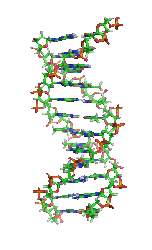SALT LAKE CITY Researchers at the University of Utah are working to help people who suffer from multiple sclerosis, and so far their work has promising results among mice.
Researchers are using stem cells to treat mice with a condition similar to MS, and some of the mice were able to walk just days after they were treated.
Dr. Peter Jensen, a professor at the University of Utah and the chairman of the Department of Pathology, spoke about the findings.
Remarkably, animals that were paralyzed, could walk, he said.
Dr. Tom Lane is another professor of pathology involved in the project, and he said the results werent what they expected.
Which was a complete surprise to us because we started the experiment with a completely different idea in mind, so this was really a happy accident, he said of the animals walking again.
Lane made the discovery after injecting human stem cells into the spinal cords of the mice. He said he was hoping to discover why the immune systems of mice often reject human stem cells, but what he found was that the stem cells were repairing the damaged nerves in the disabled mice.
In essence, youre regenerating the function of damaged nerves and gives hope for a potential therapy down the road to actually reverse the symptoms that were permanent or otherwise previously permanent in patients with MS, Jensen said.
The current procedure is invasive, as doctors must operate on the spinal cord in order to get results. But they hope further tests will lead to a less invasive method.
What we hope to do is to find out what these cells are secreting that actually change the environment within the diseased tissue, and if we can identify what factor or factors are being secreted, then we could potentially make this druggable so that it could be injected into people that have MS, or the long term goal would be to make it into a pill form so they could take it orally, Lane said.
Read more:
U of U researchers studying stem cells inadvertently cure mice of paralysis
